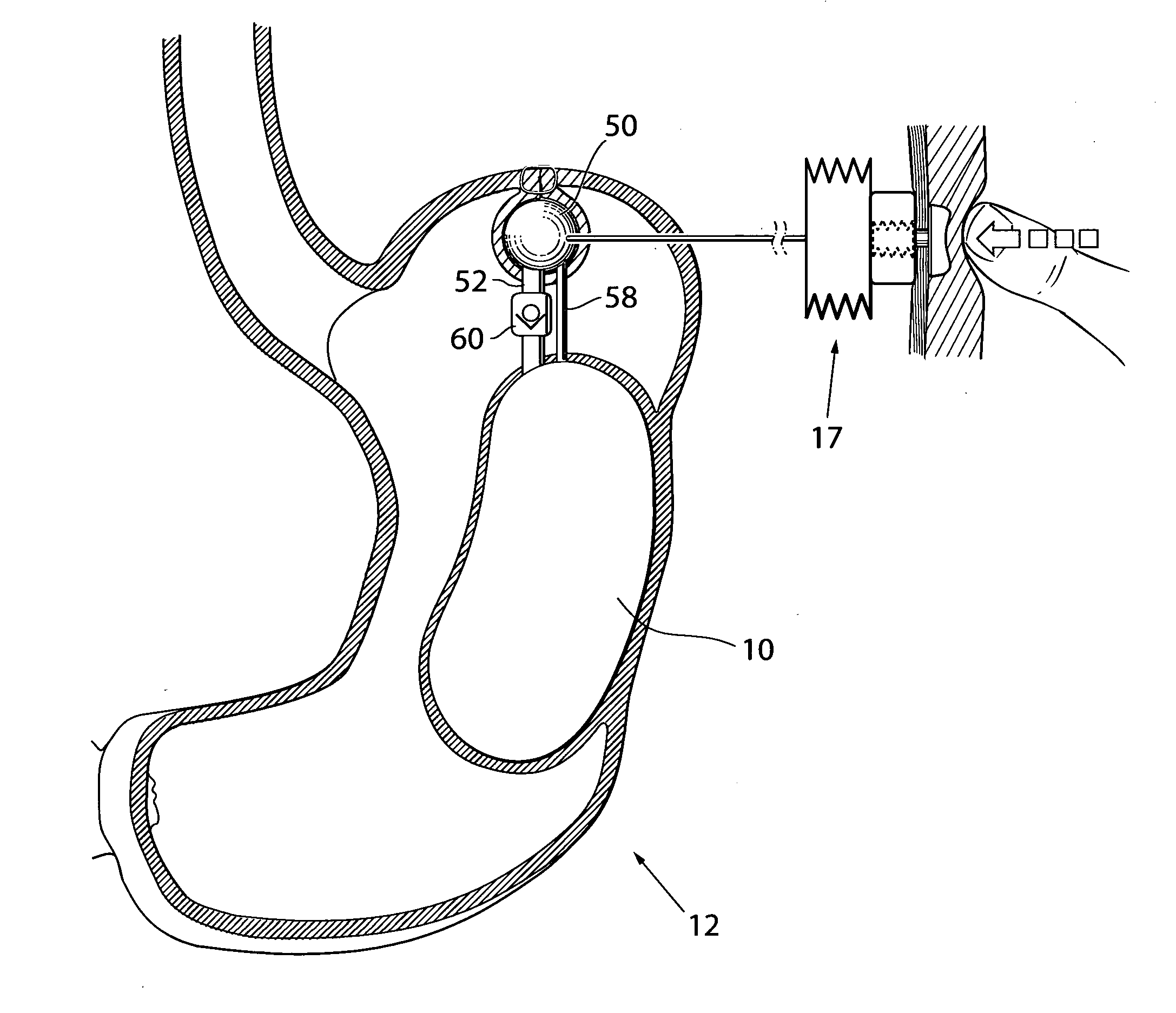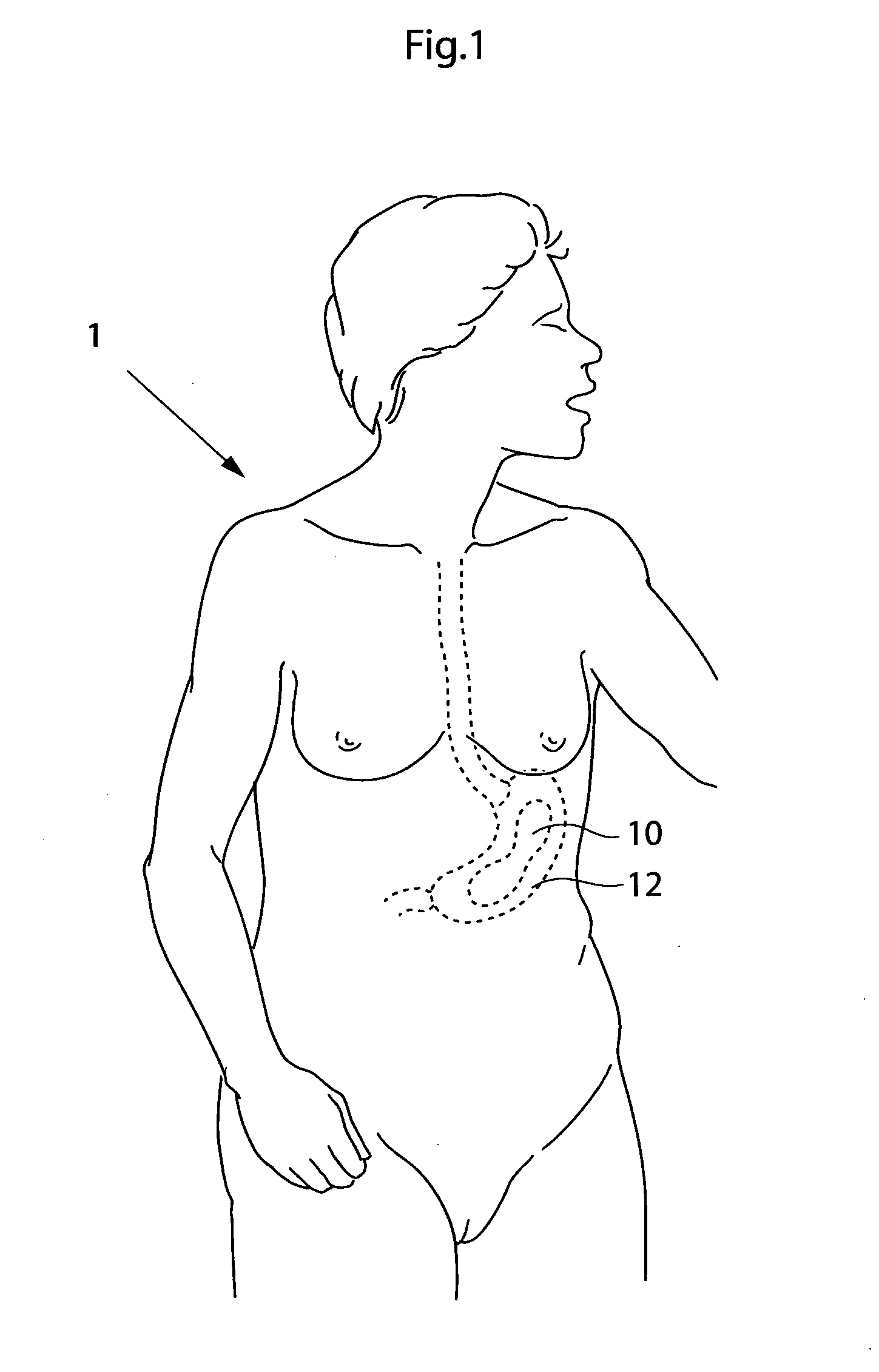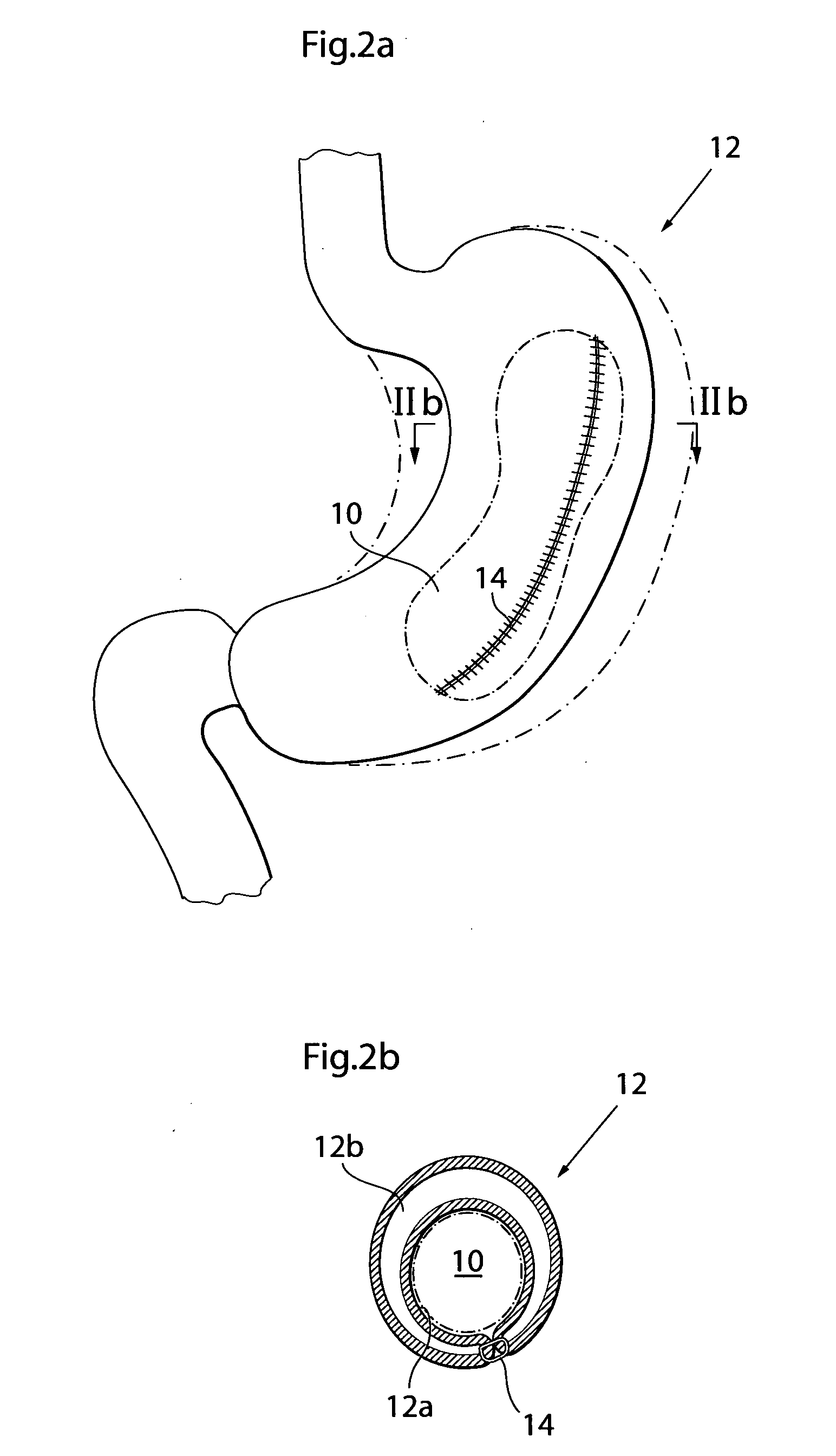[0007]This object and others are obtained by an apparatus described in the appended claims. Thus, by providing an apparatus comprising at least one
volume filling device adapted to be at least substantially invaginated by a stomach wall portion of the patient and having an outer surface that includes a
biocompatible material, wherein the volume filling device is adapted to be placed outside of the stomach wall with the outer surface of the volume filling device resting against the outside of the stomach wall, such that the volume of the food cavity is reduced in size by a volume substantially exceeding the volume of the volume filling device, the volume filling device having a maximum circumference of at least 30 millimeters, an apparatus for treating obesity is obtained. The present invention is based on the realization that by invaginating a volume filling device by the stomach wall on the outside thereof this device is protected from the stomach acids and will thus remain functioning for a very long time.
[0009]The apparatus may comprise a fixation device, suitably two or more fixation devices, adapted to be involved in the fixation of the volume filling device to the stomach wall. The volume filling device may comprise a holding device adapted to be held by an instrument, suitably two or more holding devices, to simplify the implantation of the device.
[0024]Preferably, the volume filling device is adapted to be kept in place by stomach-to-stomach sutures or staples to invaginate the device in the stomach wall. Advantageously, the volume filling device has varying circumference to better be kept in place invaginated in the stomach wall of the patient. The stomach-to-stomach sutures or staples may be provided with fixation portions exhibiting a structure adapted to be in contact with the stomach wall to promote growth in of human tissue to secure long term placement of the volume filling device attached to the stomach wall. The structure may comprise a net like structure.
[0033]In an embodiment, the apparatus is further adapted to treat
reflux disease. To this end, it further comprises an implantable
movement restriction device adapted to be at least partly invaginated by the patient's stomach fundus wall and having an outer surface that includes a
biocompatible material, wherein a substantial part of the outer surface of the
movement restriction device is adapted to rest against the stomach wall without injuring the latter in a position between the patient's diaphragm and at least a portion of the lower part of the invaginated stomach fundus wall, such that movement of the cardiac notch of the patient's stomach towards the patient's diaphragm is restricted, when the
movement restriction device is invaginated, to thereby prevent the cardia from sliding through the patient's diaphragm opening into the patient's
thorax, so as to maintain the supporting pressure against the patient's cardia
sphincter muscle exerted from the patient's
abdomen, the movement restriction device having a size of at least 125 mm3 and a circumference of at least 15 mm.
[0034]In another embodiment, the apparatus is further adapted to treat
reflux disease. To this end, it further comprises an implantable movement restriction device having an outer surface including a
biocompatible material, wherein the movement restriction device is adapted to rest with at least a part of its outer surface against the patient's stomach fundus wall, in a position between the patient's diaphragm and the fundus wall, such that movement of the cardiac notch of the patient's stomach towards the patient's diaphragm is restricted, when the movement restriction device is implanted in the patient, to thereby prevent the cardia from sliding through the patient's diaphragm opening into the patient's
thorax, so as to maintain the supporting pressure against the patient's cardia
sphincter muscle exerted from the patient's
abdomen, wherein the movement restriction device having a size of at least 125 mm3 and a circumference of at least 15 mm, and an a fixation device adapted to secure the movement restriction device in said position, when the movement restriction device is implanted.
[0035]In another embodiment, the apparatus is further adapted to treat
reflux disease. To this end, it further comprises an implantable movement restriction device adapted to be at least partly invaginated by the patient's stomach fundus wall and having an outer surface that includes a biocompatible material, wherein a substantial part of the outer surface of the movement restriction device is adapted to rest against the stomach wall without injuring the latter in a position between the patient's diaphragm and at least a portion of the lower part of the invaginated stomach fundus wall, such that movement of the cardiac notch of the patient's stomach towards the patient's diaphragm is restricted, when the movement restriction device is invaginated, to thereby prevent the cardia from sliding through the patient's diaphragm opening into the patient's
thorax, so as to maintain the supporting pressure against the patient's cardia
sphincter muscle exerted from the patient's
abdomen, the movement restriction device having a size of at least 125 mm3 and a circumference of at least 15 mm, further comprising a stretching device comprising at least one operable stretching device implantable in the obese patient and adapted to stretch a portion of the patient's stomach wall such that satiety is created.
 Login to View More
Login to View More  Login to View More
Login to View More 


